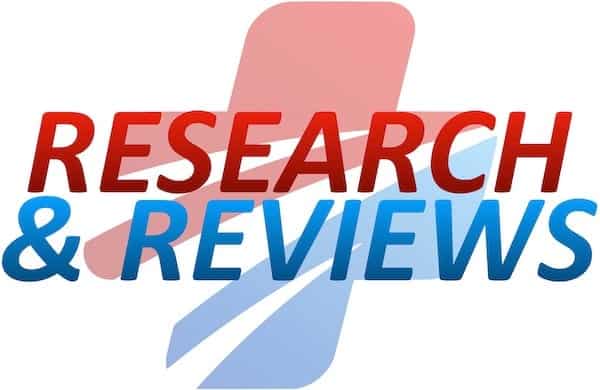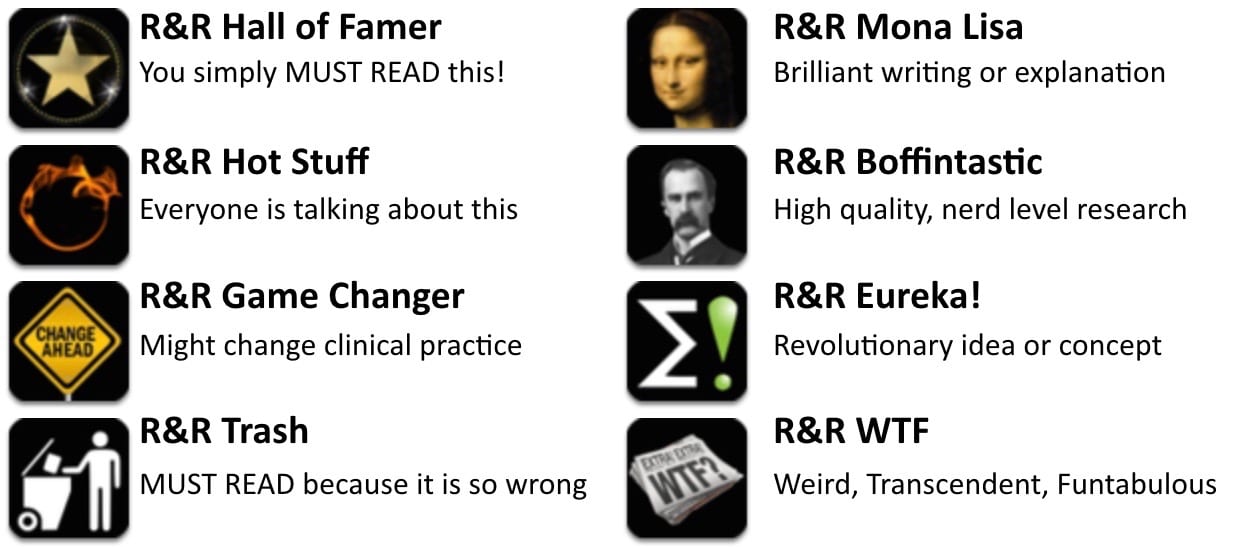R&R In The FASTLANE 073
Welcome to the 73rd edition of Research and Reviews in the Fastlane. R&R in the Fastlane is a free resource that harnesses the power of social media to allow some of the best and brightest emergency medicine and critical care clinicians from all over the world tell us what they think is worth reading from the published literature.
This edition contains 7 recommended reads. The R&R Editorial Team includes Jeremy Fried, Nudrat Rashid, Soren Rudolph, Anand Swaminathan and, of course, Chris Nickson. Find more R&R in the Fastlane reviews in the : Overview; Archives and Contributors
This Edition’s R&R Hall of Famer
Wilmalasena Y et al. Apneic Oxygenation Was Associated With Decreased Desaturation Rates During Rapid Sequence Intubation by an Australian Helicopter Emergency Medicine Service. Ann Emerg Med 2014. PMID 25536868
- This is a retrospective analysis of data on rapid sequence intubation in retrieval medicine of the Sydney HEMS group looking at desaturation before and after the adoption of apneic oxygenation. The group found a significant decrease in desaturation events (22.6% to 16.5%). While it isn’t causality, it’s further evidence that apneic oxygenation should be routine practice.
- Recommended by Anand Swaminathan
Green SM, Andolfatto G, Krauss BS. Ketamine and intracranial pressure: no contraindication except hydrocephalus. Ann Emerg Med. 2015; 65(1):52-4. PMID 25245275
- Game-changing editorial accompanying systematic review of ketamine’s impact on ICP.
- Recommended by: David Newman, Ashley Shreeves
Zadel S et al. Point of care ultrasound for orotracheal tube placement assessment in out-of hospital setting. Resuscitation 2015; 87: 1-6. PMID 25450569
- Throw away your stethoscope? Our Slovenian colleagues have tried to answer that question when it comes to confirming the proper tube placement after RSI in the prehospital setting. A total of 124 patients needing RSI were enrolled. After the intubation, bilateral chest auscultation and assessment of bilateral lung sliding and diaphragm excursion were done. Auscultation and US were compared using capnography as reference standard. In a population of 10.5% failed first RSI attempts they found sensitivity and negative predicted value were 100%, specificity was 90% and positive predicted value 30% (95% confidence interval) for auscultation. Both for POCUS alone and for combined auscultation and POCUS sensitivity, specificity,positive predicted value, and negative predicted value all were 100% (95% confidence interval). Median time spent on US was 30 secs which may seem long, but the authors justify this by the high yield of US.
- Recommended by Søren Rudolph
Foy AJ, et al. Comparative Effectiveness of Diagnostic Testing Strategies in Emergency Department Patients With Chest Pain: An Analysis of Downstream Testing, Interventions, and Outcomes. JAMA Intern Med 2015. PMID 25622287
- How many chest pain patients in the ED are hospitalized with an MI in the next 6 months? ……0.33% according to this study.
- This outstanding article, limited by the usual issues associated with retrospective reviews, demonstrates the futility of what is the standard approach for many. The authors used insurance data to look at patients presenting to the ED with chest pain and compared those who had non-invasive testing performed to those who did not to see who had further testing, procedures, and MIs. The study is somewhat statistically complicated, but in a nutshell, when comorbid conditions such as diabetes, hypertension, and hypercholesterolemia were statistically controlled for, there was no difference in future hospitalizations for myocardial infarction between the two groups. Patients who received one test, however, were much more likely to have further testing, including cardiac catheterization.
- The authors summarize that “When the risk of an event is low, it is difficult to reduce it further. The results of this study do not support the idea that future MIs can be significantly reduced with early noninvasive testing.”
- The accompanying editorial by Dr. Redberg (PMID 25621971) appropriately emphasizes that “It is time to change our guidelines and practice for treatment of chest pain in low risk patients.”
- Recommended by Jeremy Fried
Shah AS et al. High sensitivity cardiac troponin and the under-diagnosis of myocardial infarction in women: prospective cohort study. BMJ 2015. PMID 25609052
- Women have less myocardial mass than men – should their troponin positivity cut-off reflect such gender differences? This observational study found gender-specific cut-offs made a possibly clinically important difference with regards to identifying acute coronary syndrome. This is probably the wave of the future.
- Recommended by Ryan Radecki
- Read More: Should Men and Women Use Different Troponin Cut-Offs? (EM Lit of Note)
Berlin DA, Bakker J. Understanding venous return. Intensive Care Med. 2014; 40(10): 1564-6. PMID 24966066
- This is a nice review for those looking a good intro to some of the more in depth physiology and a great introduction to the importance of the right sided circulation for critical care. A few take home points 1) heart rate and stroke volume on their own don’t seem to explain the 5 fold increase in cardiac output we can produce. 2) conversion of unstressed volume on the right hand side of the circulation into venous return is likely key. 3) RA pressure normally around 0 mm hg and systemic filling pressure around 7 mm hg – maintaining this gradient from positive to negative is key to maintaining good cardiac output.
- Recommended by Andy Neil
Lewis LM et al.Ecallantide for the Acute Treatment of Angiotensin-Converting Enzyme Inhibitor–Induced Angioedema: A Multicenter, Randomized, Controlled Trial. Ann Emerg Med 2014. PMID 25182544
- ACE inhibitor induced angioedema represents a serious medication complication and a difficult reaction to manage with no definitive therapy. Ecallantide appeared to be a possible antidote as it is a potent direct inhibitor of plasma kalikrein. However, in this phase 2 double-blind study, no benefit was seen in patients with mild to moderate reactions. The drug may still play a role in the management of severe cases but this remains unclear.
- Recommended by Anand Swaminathan
Senior Consultant Anesthesiologist, Traumemanager and PHEM doctor. Dedicated to trauma resuscitation, prehospital care and airway management. Barometerbarn | @SorenRudolph |







